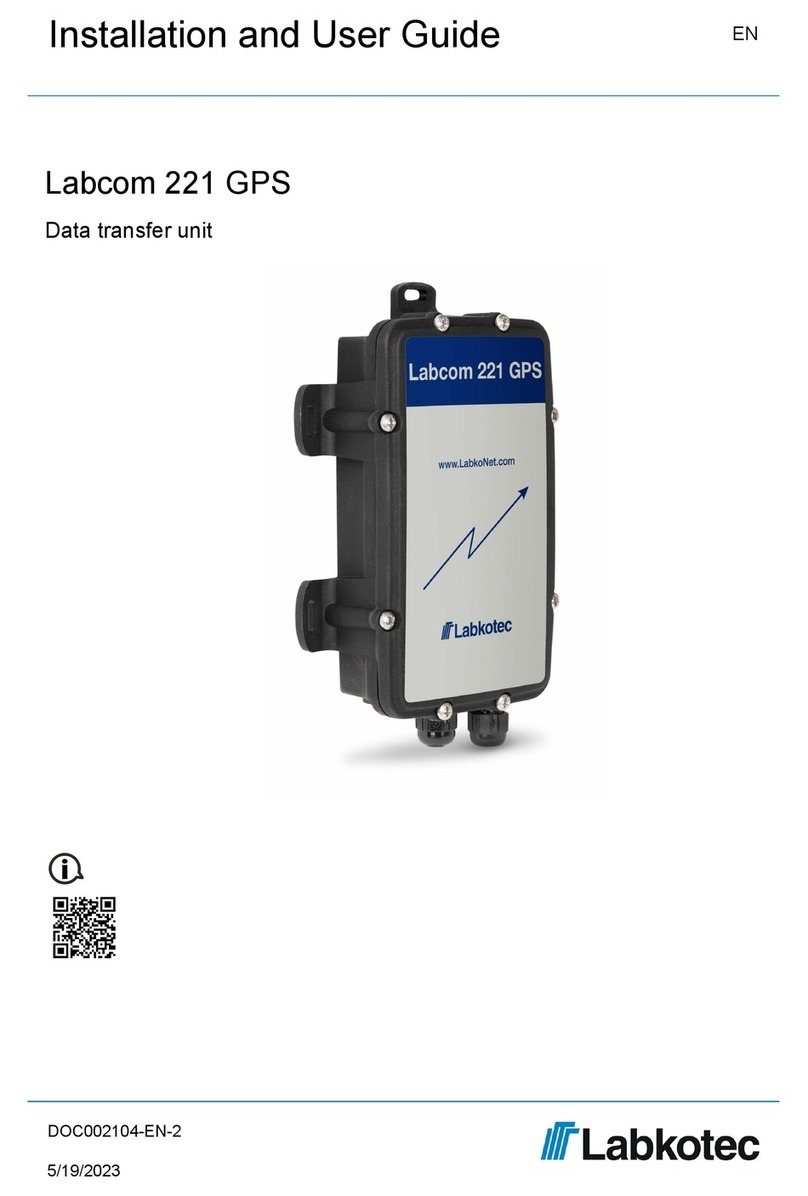OilSET-1000 Oil Separator Alarm Device D15399_e
Installation and Operating Instructions
Copyright © 2008 Labkotec Oy 9/10 We reserve the right for changes without notice
5 REPAIR AND SERVICE
The probe should be cleaned and the operation should also be tested
when emptying the oil storage chamber or at least once every six
months. The easiest way to check the operation is to lift the probe up
in the air and to put it back to the separator. The operation is
described in chapter 3.
For cleaning, a mild detergent (e.g. washing-up liquid) and a
scrubbing brush can be used.
The mains fuse (marked 125 mAT) can be changed to another glass
tube fuse 5 x 20 mm / 125 mAT complying EN 60127-2/3. Any other
repair and service works on the device may be carried out only by a
person who has received training in Ex-i devices and is authorized by
the manufacturer.
In case of queries, on site commissioning and service contract details,
please contact Labkotec Oy’s service:
labkotec.service@labkotec.fi.
Environment-Agency Pollution Prevention Guidelines (PPG3):
“Any electrical device used within a separator or used to monitor sensors
placed within a separator must be intrinsically safe and certified to a
suitable explosion protection standard. The location of the monitoring
device, such as the alarm or 'separator management system' control panel,
must be located within a safe area and conform to the requirements of BS EN
60079-10. For this reason it is important to always use qualified technicians
who are familiar with the installation, calibration and servicing of intrinsically
safe equipment. Regular maintenance and testing of equipment is
essential.”
6 SAFETY INSTRUCTIONS
OilSET-1000 control unit must not be installed in potentially explosive
atmosphere. Probes connected to it may be installed in zone 0, 1 or 2
potentially explosive atmospheres.
In case of installations in explosive atmospheres the national
requirements and relevant standards as EN 50039 and/or EN 60079-
14 must be taken into account.
If electrostatic discharges can cause hazards in the operating
environment, the device must be connected into equipotential ground
according to requirements with regards to explosive atmospheres.
Equipotential grounding is made by connecting all conductive parts
into same potential e.g. at the cable junction box. Equipotential ground
must be earthed.
The device does not include a mains switch. A two pole mains switch
(250 VAC 1 A), which isolates both lines (L1, N) must be installed in
the main power supply lines in the vicinity of the unit. This switch
facilitates maintenance and service operations and it has to be marked
to identify the unit.
When executing service, inspection and repair in explosive
atmosphere, the rules in standards EN 60079-1 and EN 60079-19
about instructions of Ex-devices must be obeyed.




























